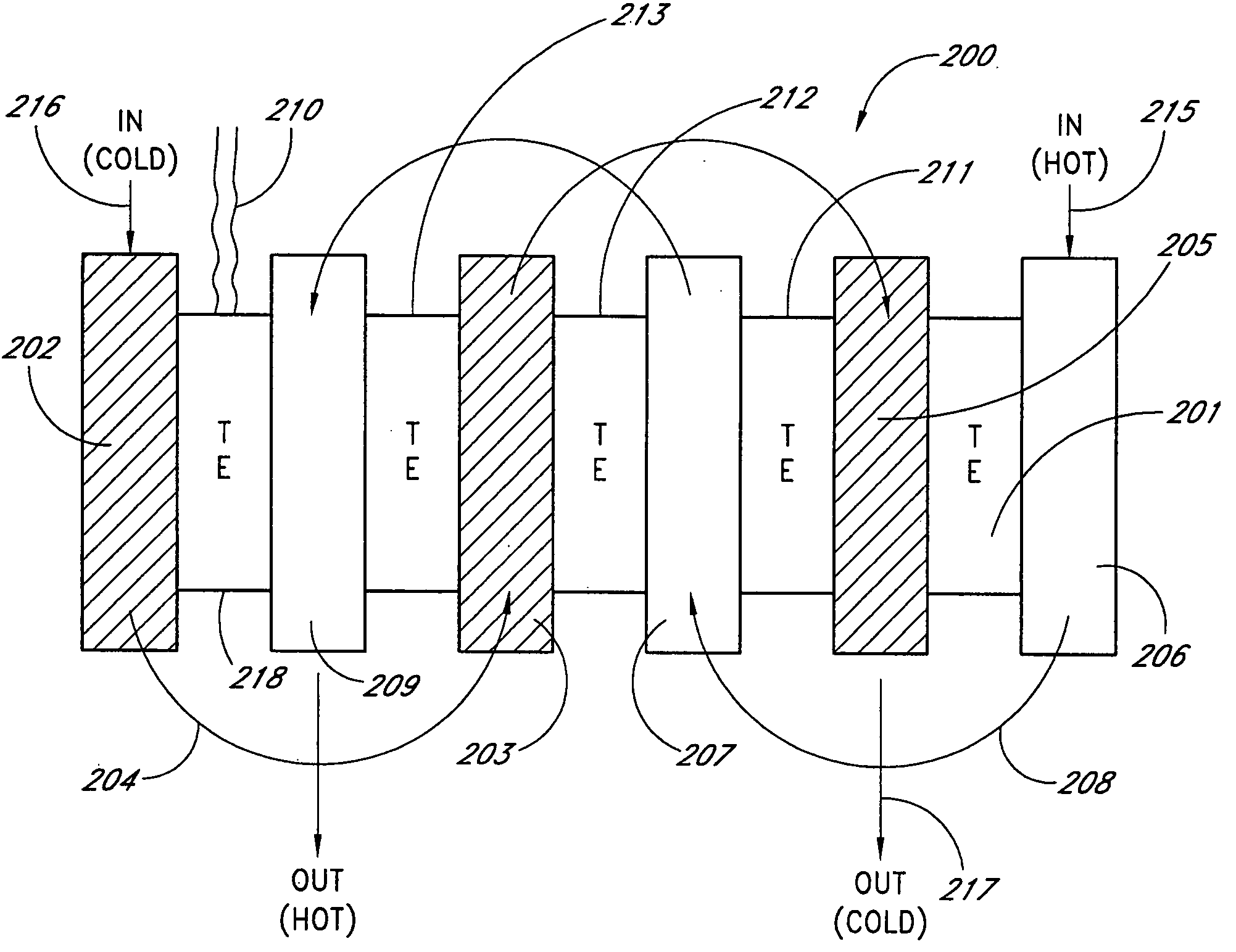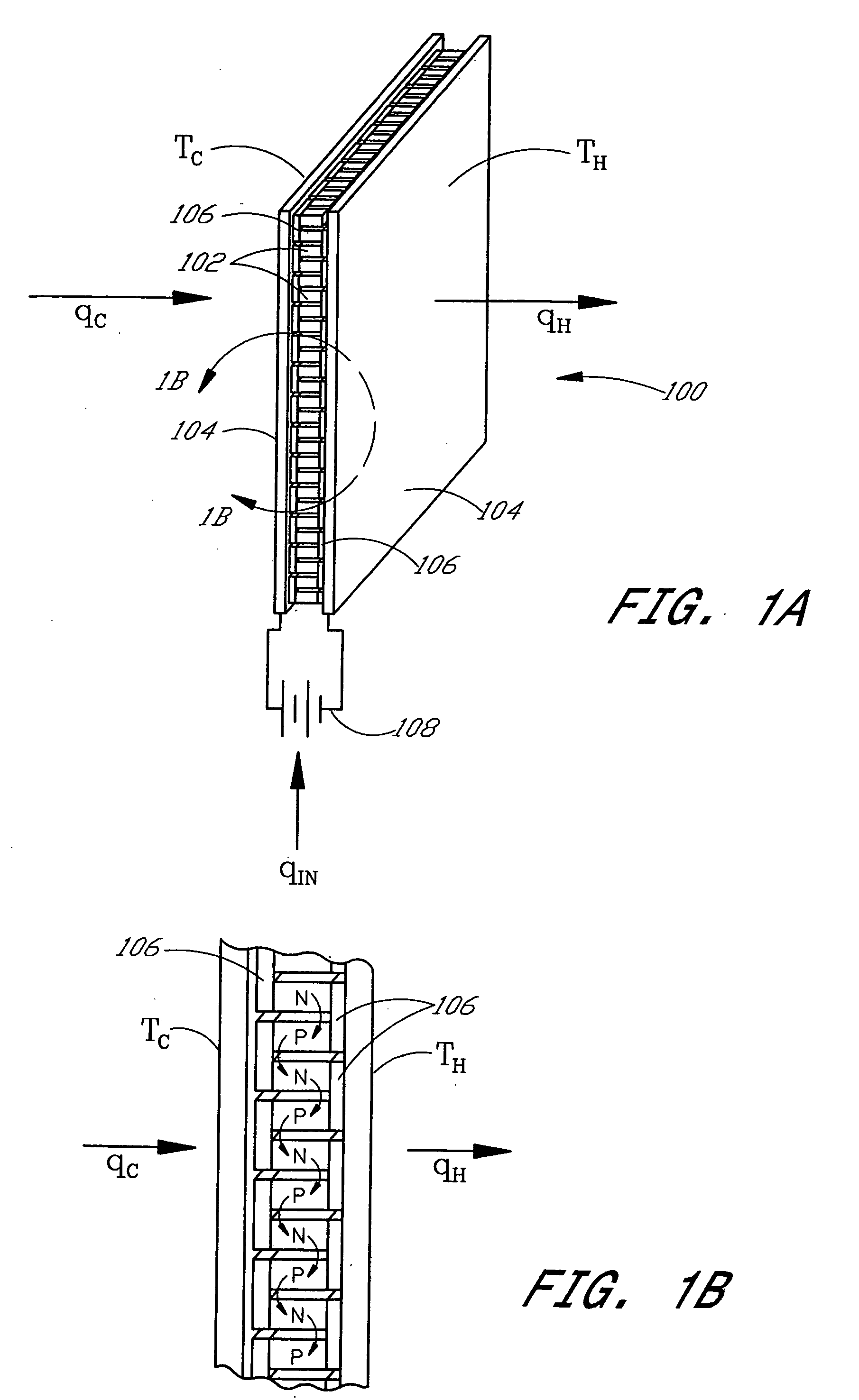High power density thermoelectric systems
a thermoelectric system and high-power technology, applied in the manufacture/treatment of thermoelectric devices, machines/engines, lighting and heating apparatus, etc., can solve the problems of low efficiency, high cost, low power density, etc., and achieve the effect of reducing the construction complexity and cost of sschp devices, reducing cost, and maintaining or improving efficiency gains
- Summary
- Abstract
- Description
- Claims
- Application Information
AI Technical Summary
Benefits of technology
Problems solved by technology
Method used
Image
Examples
Embodiment Construction
[0090] In the context of this description, the terms thermoelectric module and TE module are used in the broad sense of their ordinary and accustomed meaning, which is (1) conventional thermoelectric modules, such as those produced by Hi Z Technologies, Inc. of San Diego, Calif., (2) quantum tunneling converters, (3) thermionic modules, (4) magneto caloric modules, (5) elements utilizing one, or any combination of thermoelectric, magneto caloric, quantum, tunneling and thermionic effects, (6) any combination, array, assembly and other structure of (1) through (6) above. The term thermoelectric element, is more specific to indicate an individual element that operates using thermoelectric, thermionic, quantum, tunneling, and any combination of these effects.
[0091] In the following descriptions, thermoelectric or SSCHP systems are described by way of example. Nevertheless, it is intended that such technology and descriptions encompass all SSCHP systems.
[0092] Accordingly, the inventi...
PUM
 Login to View More
Login to View More Abstract
Description
Claims
Application Information
 Login to View More
Login to View More - R&D
- Intellectual Property
- Life Sciences
- Materials
- Tech Scout
- Unparalleled Data Quality
- Higher Quality Content
- 60% Fewer Hallucinations
Browse by: Latest US Patents, China's latest patents, Technical Efficacy Thesaurus, Application Domain, Technology Topic, Popular Technical Reports.
© 2025 PatSnap. All rights reserved.Legal|Privacy policy|Modern Slavery Act Transparency Statement|Sitemap|About US| Contact US: help@patsnap.com



